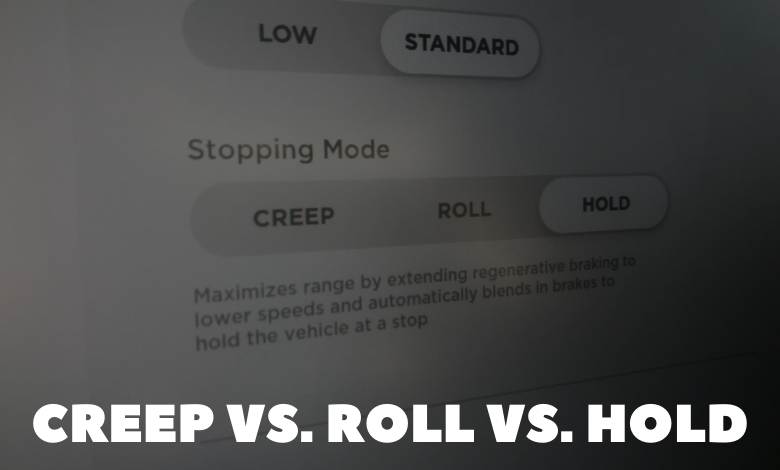Tesla Creep vs. Roll vs. Hold

Tesla, renowned for its top-notch manufacturing of high-quality goods, particularly automobiles, has been continuously refining its car models over the years.
With each iteration, Tesla introduces new features, including various stopping modes, which have left consumers pondering: which model suits their needs best?
The primary purpose of Tesla’s Creep, Roll, and Hold functions is to regulate speed ranges, each serving specific driving scenarios. The Hold mode is tailored for reversing, Creep mode for navigating slow-moving traffic, and Roll mode for gradual acceleration on inclines.
Despite their distinctive roles, these modes are often interchangeable depending on the driving circumstances.
This article offers an in-depth comparison of Tesla’s stopping modes to aid in decision-making, highlighting their unique attributes and recommending the most suitable mode.
Distinguishing Tesla’s Creep, Roll, and Hold Modes
Similar to conventional vehicles, Tesla’s employ distinct methods for deceleration or stopping. Unlike traditional brake pedals, Tesla’s stopping modes—Creep, Roll, and Hold—are exclusive to Model 3 and Model Y.
Selecting the optimal stopping mode among Creep, Roll, and Hold can be challenging due to their overlapping functionalities, often leading users to perceive them as identical.
However, a closer examination reveals their differences, enabling informed decisions tailored to individual preferences. Exploring the features of each mode sheds light on their reliability and usability.
1. Creep Mode
Activating Creep mode imparts a gas-powered vehicle-like behavior to your Tesla. Upon releasing the brake pedal, the car moves slowly before coming to a complete halt, making it ideal for Tesla novices.
Creep Mode Features
Ideal for Tesla newcomers and stop-and-go traffic situations, Creep mode mimics traditional vehicles’ behavior. The vehicle gradually slows down when the accelerator is released, although manual braking is necessary for a complete stop.
2. Roll Mode
In Roll mode, tapping the option initiates gradual acceleration until the car stops, akin to placing a vehicle in neutral. This mode is particularly useful for descending inclines without manual braking.
Roll Mode Features
Acting as a virtual neutral gear, Roll mode enables effortless coasting until the car halts, making it advantageous for hill descents. Re-engaging the accelerator prompts the car to exit this mode.
3. Hold Mode
Hold mode eliminates the need for constant brake pedal pressure to maintain a standstill. Once engaged, the car remains stationary until the accelerator is pressed, making it convenient for reversing or navigating slopes.
Determining the Best Tesla Stopping Mode: Creep, Roll, or Hold?
While longevity and efficiency are paramount for car buyers, the allure of Tesla’s enhanced stopping modes may overshadow fundamental considerations like durability.
Hold Mode Features
Preferred by many Tesla drivers, Hold mode facilitates one-pedal driving, optimizing brake usage and battery efficiency. Its versatility makes it suitable for reversing and navigating various terrains.
The choice of the best Tesla stopping mode hinges on individual preferences and the vehicle model owned.
In summary, while Hold mode offers efficiency and versatility, Creep and Roll modes contribute to an exceptional driving experience.
When to Use Creep Mode in Tesla?
Creep mode, available across Tesla models S, X, and 3, enables smooth forward or backward movement with minimal accelerator input, resembling conventional automated transmission vehicles.
This mode remains active until manually changed, without compromising brake or battery efficiency. It is particularly handy for leisurely drives, traffic queues, and parking maneuvers.
Is Hold Mode Automatic in Tesla?
Tesla’s Hold mode automatically engages under specific conditions, such as traffic lights or when transitioning from Creep or Roll modes. Disengagement is initiated by pressing the accelerator or releasing the brake pedal while stationary.
In conclusion, Tesla’s stopping modes offer diverse functionalities tailored to various driving scenarios, empowering users with enhanced control and efficiency.
